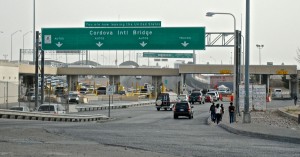Cross-border home ownership rate reflects El Paso, Juarez binational community dynamic
|
About one in every six El Pasoans say they own homes in both Ciudad Juarez and El Paso, according to a recent survey. The Border Perception Survey asked border residents about topics ranging from education and health to the security and environment. The survey, a collaboration between the El Paso Community Foundation and Fundación Comunitaria Frontera Norte as part of an initiative called Building Broader Communities in the Americas, was conducted between August and September of 2018 and included 896 El Pasoans and 1,535 Juarez residents. “The surprising thing was such a large number of people who actually are dual citizens, or are citizens of one side of the other but have homes on the other side of the border. And so that was an impressive finding,” said one of the researchers on the project, Josiah Heyman, director of the Center for Inter-American and Border Studies and professor of Anthropology at the University of Texas at El Paso.









